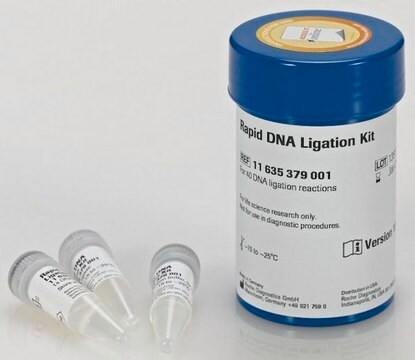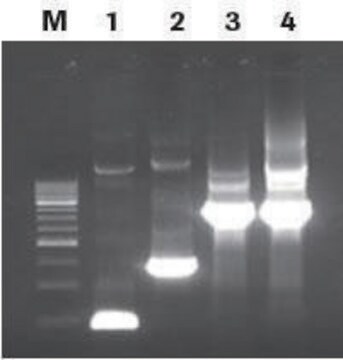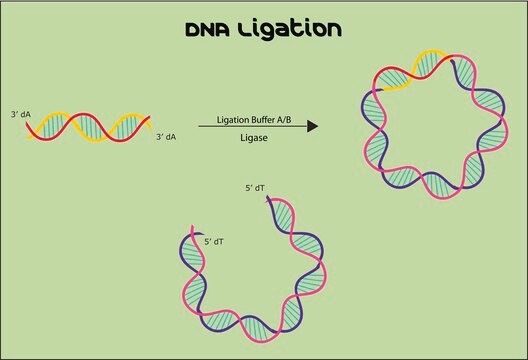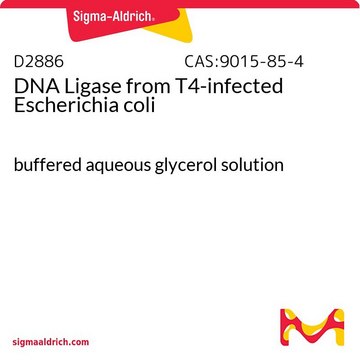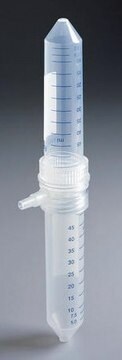Recommended Products
grade
for molecular biology
Quality Level
usage
kit sufficient for 150 ligation reactions
shipped in
wet ice
storage temp.
−20°C
General description
Application
- Joining fragments of DNA into a cloning vector
- Mutagenesis
- Gene anyalysis and structure-function relationships
Components
- 300uL 10X Ligation Buffer (D2176) in 250 mM Tris-HCl (pH 7.8) 100 mM MgCl2, and 10 mM dithiothreitol
- 3 x 100 units T4 DNA Ligase (D2886) in 50% glycerol with 10 mM Tris-HCl (pH 7.5) 50 mM KCl, and 1 mM dithiothreitol
- 3 x 100 uL 10 mM ATP ( A3702)
- 50 uL Control pBR322 DNA, HAE III Digest (D9430) 0.5 ug/ul in 10 mM Tris-HCl (pH 8.0), and 1 mM EDTA
- 1.5 mL 24% (w/v) PEG Solution, (P 2454)
- 1.5 mL Molecular Biology Grade Water (W4502)
Principle
Signal Word
Warning
Hazard Statements
Precautionary Statements
Hazard Classifications
Eye Irrit. 2
Storage Class Code
10 - Combustible liquids
WGK
WGK 3
Flash Point(F)
Not applicable
Flash Point(C)
Not applicable
Certificates of Analysis (COA)
Search for Certificates of Analysis (COA) by entering the products Lot/Batch Number. Lot and Batch Numbers can be found on a product’s label following the words ‘Lot’ or ‘Batch’.
Already Own This Product?
Find documentation for the products that you have recently purchased in the Document Library.
Protocols
The cloning process requires the ligation of linear DNA into a cloning vector. This ability to join fragments of DNA through recombinant technology is essential for many basic experiments in biotechnology.
Our team of scientists has experience in all areas of research including Life Science, Material Science, Chemical Synthesis, Chromatography, Analytical and many others.
Contact Technical Service